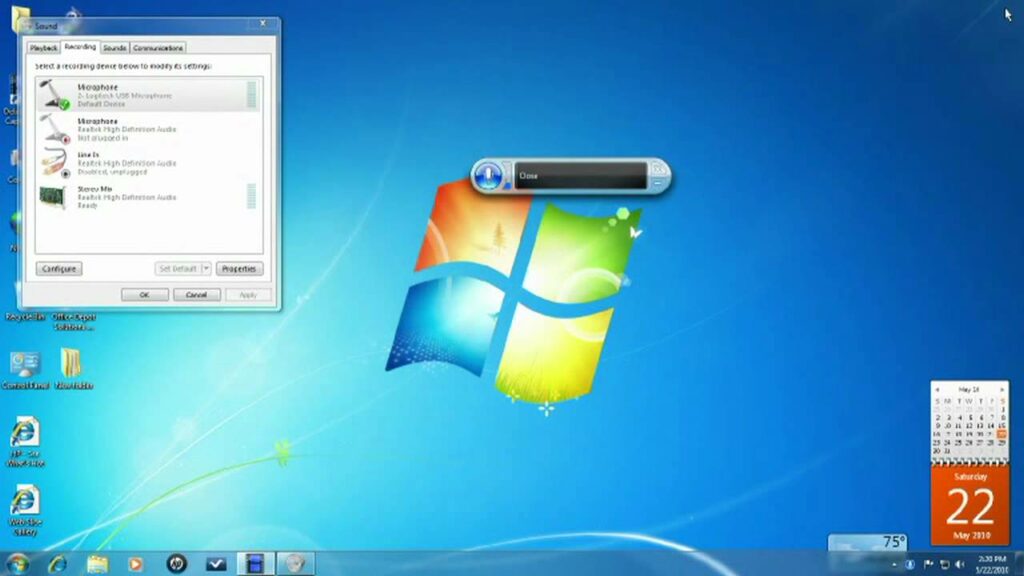Unlocking Voice: A Comprehensive Guide to Harnessing Windows Speech Recognition in Windows 7

In the digital age, advancements in technology have transformed the way we interact with our computers. Windows 7 introduces a powerful tool known as Windows Speech Recognition, designed to provide users with hands-free control and seamless dictation capabilities. Whether you’re navigating your computer, composing documents, or executing commands, Windows Speech Recognition empowers users to accomplish tasks using their voice, enhancing accessibility and productivity. In this comprehensive guide, we will delve deep into the intricacies of using Windows Speech Recognition in Windows 7, providing step-by-step instructions, advanced techniques, and practical insights to help you harness the power of voice and revolutionize your computing experience.
Understanding Windows Speech Recognition in Windows 7:
Before delving into the process of using Windows Speech Recognition, let’s first grasp the concept and significance of this innovative tool:
- Hands-Free Control: Windows Speech Recognition allows users to control their computers using voice commands, eliminating the need for manual input via keyboard or mouse.
- Dictation and Transcription: With its powerful dictation capabilities, Windows Speech Recognition enables users to dictate text, compose documents, and transcribe spoken words into written text with remarkable accuracy.
- Accessibility and Productivity: Designed to enhance accessibility and productivity, Windows Speech Recognition provides users with a convenient and efficient means of interacting with their computers, particularly for individuals with mobility impairments or those seeking to optimize their workflow.
Accessing Windows Speech Recognition in Windows 7:
Now, let’s explore how to access and enable Windows Speech Recognition in Windows 7:
- Accessing Windows Speech Recognition:
- Click on the Start button in the taskbar and navigate to “All Programs” > “Accessories” > “Ease of Access” > “Windows Speech Recognition.”
- Alternatively, type “Speech Recognition” in the Start menu search box and select “Windows Speech Recognition” from the search results.
- Setting Up Windows Speech Recognition:
- Follow the on-screen prompts to set up Windows Speech Recognition, including configuring your microphone and completing the speech recognition tutorial to train the system to recognize your voice.
Using Windows Speech Recognition Features:
Now that we’ve accessed Windows Speech Recognition, let’s explore its key features and functionalities:
- Voice Commands:
- Windows Speech Recognition offers a wide range of voice commands for controlling your computer, including opening applications, navigating menus, and executing commands.
- Activate Windows Speech Recognition by saying “Start listening,” and then issue commands such as “Open Notepad,” “Switch to Desktop,” or “Go to Sleep.”
- Dictation and Transcription:
- Use Windows Speech Recognition to dictate text in various applications, including word processors, email clients, and web browsers.
- Activate dictation mode by saying “Start dictation,” and then speak naturally to transcribe your spoken words into written text.
- Correction and Editing:
- Windows Speech Recognition provides tools for correcting and editing text, allowing users to make corrections, insert punctuation, and format text using voice commands.
- Use commands such as “Correct [word],” “Insert [punctuation],” or “Select [text]” followed by editing commands to make precise adjustments.
- Training and Personalization:
- Windows Speech Recognition can be trained to recognize your voice more accurately by completing training exercises and correcting recognition errors.
- Access the Speech Recognition Training tool to practice speaking and improve recognition accuracy over time.
Advanced Features and Tips:
To further enhance your experience with Windows Speech Recognition in Windows 7, consider the following advanced features and tips:
- Custom Commands:
- Customize Windows Speech Recognition by creating your own voice commands for launching applications, executing scripts, or performing specific tasks.
- Access the Speech Recognition Options to create and manage custom commands based on your preferences and workflow.
- Vocabulary and Language Support:
- Windows Speech Recognition supports multiple languages and dialects, allowing users to dictate text and issue commands in their preferred language.
- Install additional language packs and configure language settings to enable support for your desired language and locale.
- Integration with Accessibility Features:
- Windows Speech Recognition integrates seamlessly with other accessibility features in Windows 7, including Magnifier, Narrator, and On-Screen Keyboard.
- Use voice commands to control accessibility features and customize settings to meet your accessibility needs.
- Improving Recognition Accuracy:
- To improve recognition accuracy, ensure that you speak clearly and enunciate words properly.
- Minimize background noise and adjust microphone settings to optimize audio input for speech recognition.
Conclusion:
Windows Speech Recognition in Windows 7 offers a revolutionary means of interacting with your computer, allowing users to control their systems and dictate text using their voice with remarkable accuracy and efficiency. By following the comprehensive guide outlined above, users can effectively harness the power of voice, enhance accessibility, and boost productivity with Windows Speech Recognition. Whether you’re navigating your computer, composing documents, or executing commands, Windows Speech Recognition provides you with the tools and flexibility to accomplish tasks with ease and efficiency. So embrace the power of voice today, master Windows Speech Recognition with confidence, and revolutionize your computing experience with hands-free control and seamless dictation capabilities.




